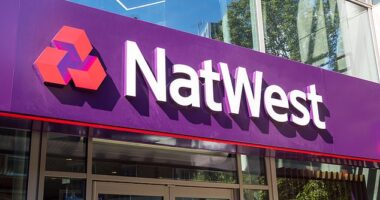ALMOST a million more people are having to give more of their wages to their taxman than in 2019.
And experts are predicting that an extra 1.5million people will be pushed into the higher rate tax band the next general election in 2024/25.
The analysis comes as inflation has hit a 40-year high of 9%, putting more strain on family finances.
The problem has come about because the government has frozen income tax bands.
Usually these move up in line with inflation, to make sure that workers’ take-home pay can keep up with the cost of living.
But if wages rise and income tax bands remain the same, more people find themselves in the higher-rate tax band – which means they pay 40% tax on their earnings.


The combination of paying more tax and coping with a cost of living crisis could force millions of households to the brink.
The threshold for higher rate tax is £50,270. Anyone earning above that level pays 40% tax on a portion of their earnings.
In 2019, the threshold was £50,000, rising to its current levels from 2020.
The government has announced this threshold will be frozen until at least the 2025/26 tax year.
Steve Webb, former pensions minister and partner at LCP, crunched the numbers and said this means a further 1.5million UK workers are likely to move up a tax bracket by the next general election.
Most read in Money
If inflation predictions are correct, this would mean that more than 2.5million people would be pushed into paying 40% tax rates.
That’s the equivalent of one in five Brits paying higher rates. Before the last general election, fewer than one in five were paying at this level.
Webb said: “There is no doubt that freezing tax allowances and thresholds is the ultimate stealth tax.
“No minister has to announce a rise in tax rates, but tens of millions of people pay more tax, and millions of those will even be dragged into higher tax bands purely because of wage inflation.”
Unfortunately, the cost-of-living crisis means that many people won’t benefit from their wages rising.
That’s because the cost of goods and services is increasing faster than salaries.
Can I avoid paying more tax?
The good news is that being a higher rate taxpayer is actually positive for your retirement savings.
There’s a simple trick that can reduce your tax burden and boost your pension at the same time.
And the extra cash boost you get into your pension can mean that you don’t miss out by moving up a tax bracket.
That’s because you get tax relief on all payments into your pension that are under the £40,000 annual allowance.
The tax relief you get, is based on the highest rate of personal tax you pay.
Put simply, basic rate tax payers need to contribute just £80 to get £100 in their pension.
Higher rate taxpayers only need to pay £60 to get the same £100 retirement pot saving.
That means that by moving up a tax bracket, you get more tax relief on the pension contributions you’re already making.
Even better, if you pay extra into your pension – those savings will also benefit from a better boost if you’re a higher rate taxpayer.
For any additional contributions you make, all the 40% that would have gone to HMRC goes to your pension instead.
If you’re just above the 40% threshold, putting everything over that limit into your retirement fund would mean you don’t pay any extra tax at all.
What to watch out for
Of course, pensions are complicated, so as a higher rate income taxpayer, you may have to fill in a self-assessment tax return to get the full benefit of your pensions tax relief.
Whether or not you need to act depends on what kind of pension you have.
If you have a private pension, you’ll automatically get 20% tax relief added to anything you save.
If you’re a higher or additional rate taxpayer, you must do a self-assessment claim to get the rest.
If you’re paying into a workplace scheme, there are two different ways that your employer can organise your tax.
If your company does something called “relief at source”, they take 80% of your pension contributions from your post-tax pay packet, and 20% tax relief is added to the pot from the government.
If you’re a higher or additional rate taxpayer, once again you need to fill out a tax return to claim back the missing relief.
Alternatively, your bosses might have something called a ‘net pay arrangement’.
This means that your pension is deducted from your pre-tax earnings.
Under net pay, when your income tax is calculated, it’s based on your salary after the pension contributions, so you pay less tax, and your take home pay is higher.
You don’t need to do anything at all as a higher-rate payer, as you’ve already benefitted from the relief.
There are other advantages to boosting pensions payments, for instance, they can push you under the child benefit threshold.
In the UK, you stop being eligible for child benefit if either partner earns more than £50,000 a year.
If you go over the threshold, you must repay some or all of the money you get.
But if you put that extra salary into pension savings, you won’t lose the benefit.
What else can I do to lower my tax bill?
If you’re one of the millions of people paying 40% tax, there are other actions you can take that will help reduce your tax burden.
- Marriage tax allowance: This perk allows married couples or those in civil partnerships to reduce their tax bill. If one partner earns less than their personal allowance (£12,570), and the other is a basic rate taxpayer, the lower earner can transfer across up to £1,260 in unused allowance. This will save the couple up to £250 per year in tax.
- Tax-free childcare: This scheme allows you to claim back 25% of your childcare costs, up to a maximum of £500 every three months. You need to have a child under 11 and both partners must earn less than £100,000 to qualify.
- Rent a room scheme: This lets you take in a lodger and earn up to £7,500 each year without paying any tax. The room will need to be furnished and in the home you live in.
- Tax deductible expenses: Self-employed people can claim expenses for running their business including things like utilities, phone bills, office supplies and even the costs of running a car.
Meanwhile, the Office for National Statistics announced that inflation has hit an all time high of 9% – here’s what it means for your money.


Some more money changes are due to happen this month – check out what they are to avoid being caught off guard.
The cost of living crisis sparks fears of a recession as the UK economy falls by 0.1%.
We pay for your stories!
Do you have a story for The Sun Online Money team?









